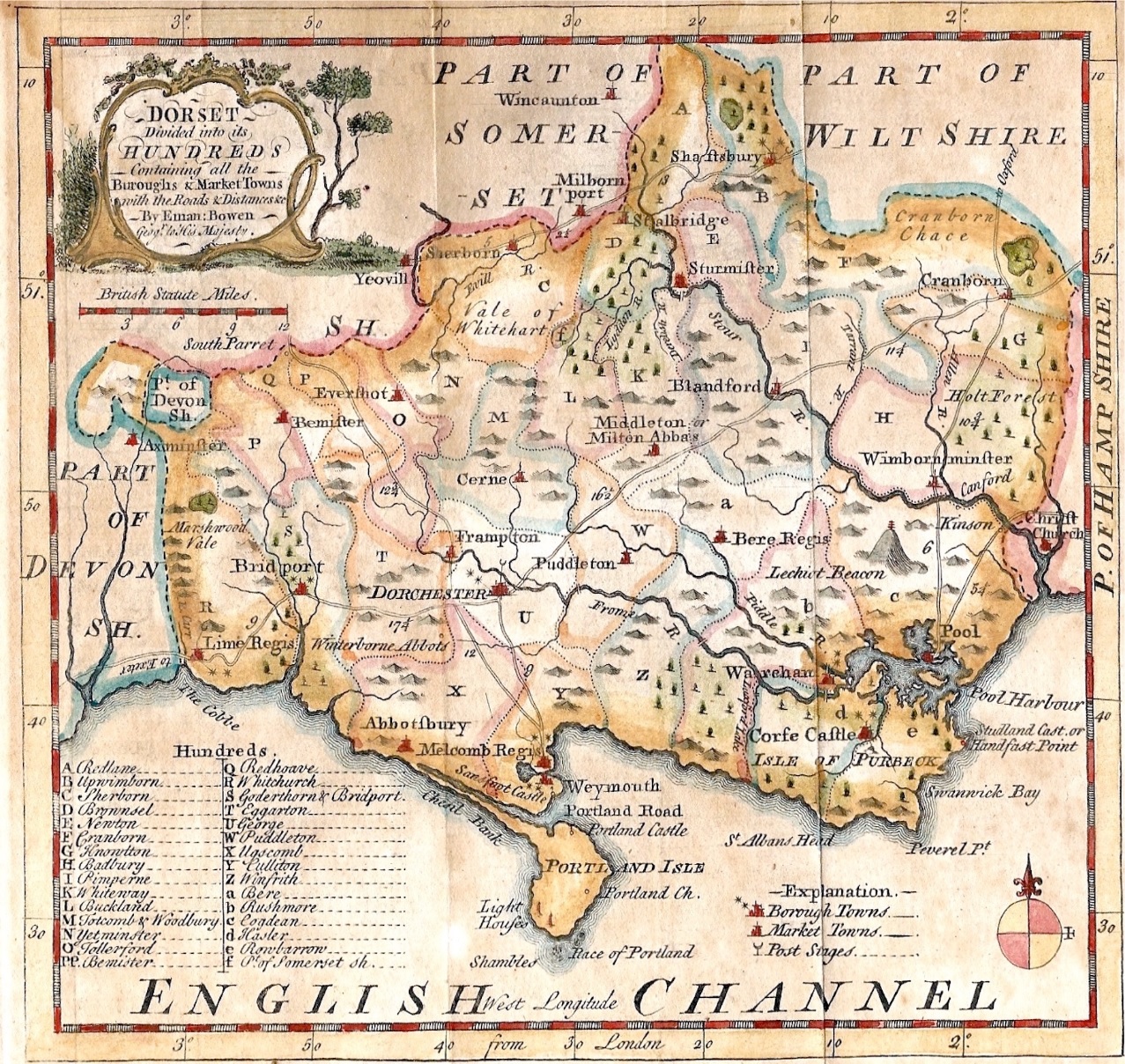
Milton Abbas
A little village with a BIG history!
The monastery of “Middletun” was founded in 934 by King Athelstan, and was granted estates all over Dorset.
The town grew up south of the monastery and flourished to become the crossroads of Dorset (the London to Exeter road came through here).

There was a weekly market which paid the second largest tax of any town in Dorset.
There were two annual fairs where people from all over Dorset came to trade, find partners and find work.
Hard to believe now!
All this changed when Joseph Damer, Lord Milton decided with Capability Brown to create a new landscape which did not include the old Town. This was pulled down in the 1780s, and new cottages erected for his estate workers in the next valley out of sight. This became the village you see today. This was the largest such project in England at the time.
For more on our research into this move see our Old Town Project page.

Learn more about the history of Milton Abbas
Guide book by local hero and author Chris Fookes is available to purchase at the Post Office.

Pubs, Ponds and Power

The TV series presented by Ben Robinson ‘The English Village’ episode features Milton Abbas. It provides a good introduction to the history of Milton Abbas focussing on Lord Milton’s removal of the Old Town to the location you see today. A short section of the programme can be viewed here.
Impact and Significance of Milton Abbas
Milton Abbas is today a unique village and its 1100 year story is important for understanding our place in society today.
It is an exemplar of:
- a monastery foundation of 934 by the first Anglo-Saxon King of England.
- a major surviving Capability Brown landscape, one of his late works and in the top five of his designs.
- a rare example of a neo-Gothic mansion house by Sir William Chambers, the leading British designer of the 18th century.
- the largest known example of a town removed by the Lord of the Manor.
- a fine example of model village mostly intact since 1780 – open to the public.
- a rare surviving and consecrated Abbey in a rural setting and open to the public, also has a rare and important Augustus Pugin “Jessie Tree” window.
- a complete and unspoilt Abbots Hall of 1498 of national significance.
- 100 listed buildings which can be seen.
To underline the importance of Milton Abbas today, on the flyleaf of Michael Hill’s 2018 book ‘The Buildings of England: Dorset’, Milton Abbas is mentioned three times, more that any other location in Dorset. It is noted for its Abbey, its Abbey House and its model village.
The Name of Milton Abbas
Like many towns founded in the Anglo-Saxon period the written form of the name of Milton Abbas has changed over time.
We are lucky to have records dating back to King Athelstan’s 934 Charter of the Abbey. However the only extant version is a later copy. The Anglo-Saxon Chronicle also mentions the town.
The town was here in 1086 and figures in both the Exchequer and Exon Domesday books.
The name of Middleton is Anglo-Saxon and means Middle Town. It is believed that this was coined to refer to the fact that it is in the middle of Dorset.
The first recorded use of Milton is in the 1268 Assize Rolls in The National Archives. From then on it is referred to in old documents as both Milton and Middleton sometimes with the suffix Abbatis, Abbot’s, or Abbas.
- Middeltone 934, Anglo-Saxon Charter, BCS 739
- Middel tune 964, Anglo-Saxon Chronicle, A version
- Middeltun c. 1000, Saints
- Middletune 1086, Exchequer Domesday Book
- Mitelona, 1086, Exon Domesday Book
- Middeltona 1130, Pipe Roll
It is not correct to say that it was called Middleton until Joseph Damer, Lord Milton, destroyed the town around 1780 and built a new village called Milton Abbas.
For more information see A D Mills, Place Names of Dorset, Part 3, 219
The Old Town of Milton Abbas
This is a familiar map of the Old Town before it was pulled down around 1780. There is much more information on this in our Old Town Project. pages.

